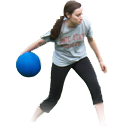
Science Explains the Middle-Aged Spread (and How to Handle It)

If the number on the scale rises as the number of candles on your birthday cake increases, blame the middle-aged spread.
Research published in the New England Journal of Medicine suggests adults gain an average of 3.35 pounds every four years, which could lead to more than 8 pounds of excess weight between the ages of 35–45.
AGING AND WEIGHT GAIN
In an attempt to understand the reasons weight gain is common in middle age, researchers at the Karolinska Institutet in Sweden studied the fat cells of men and women for a period of 13 years. Their research showed the rate at which fat is removed from your cells — called lipid turnover — slows as you age, triggering weight gain.
A separate study found aging increases levels of an enzyme called DNA-dependent protein kinase, or DNA-PK, which appears to slow your metabolism and make it harder to burn fat. An uptick in DNA-PK was associated with midlife weight gain in mice. The researchers expect blocking the enzyme, likely with medication, could help combat weight gain in midlife.
MENOPAUSE AND WEIGHT GAIN
For women, aging can also lead to redistribution of fat, according to a new study published in the American Journal of Obstetrics and Gynecology, which showed post-menopausal women experienced increases in their waist circumferences — the classic definition of middle-aged spread — and decreases in the amount of fat on their legs. The majority of the women included in the study did not gain weight.
“In two people with the same BMI, the one who has more of an ‘apple’ shape and stores fat in their abdomen is at higher risk of heart disease than the one who stores their fat elsewhere,” explains Dr. Erin Michos, MHS, associate director of preventive cardiology at Johns Hopkins University School of Medicine.
Women whose waist circumference was greater than 35 inches were 31% more likely to die within a 20-year period than those with smaller waist circumferences, even if their BMI fell in the “normal” range, according to research from a 2019 issue of JAMA Open Network. The primary causes of death among women with so-called central obesity (or larger waistlines) were heart disease and obesity-related cancers such as breast and colon cancer.
“In the most recent obesity-management guidelines, measuring [waist circumference] was recommended among people who were either overweight or obese but not among people of normal weight,” says Yangbo Sun, postdoctoral research scholar at the University of Iowa College of Public Health. “This might send those people with normal weight but with high abdominal fat … a wrong message that [they] are free of any particular obesity-related risk, while in fact, they are at elevated risk of mortality and might need risk-reduction interventions, such as lifestyle modifications and other interventions.”
RUNNERS AND WEIGHT GAIN
Older research followed 4,769 runners between the ages of 18–50 and found the average man gained about 3.3 pounds and .75 inches around his waist per decade regardless of the number of miles they ran per week. Based on the results, researchers suggested 30-year-old men who ran 10 miles per week would need to increase their distance to 24 miles per week by age 40 to avoid weight gain.
You might not be able to outrun the middle-aged spread, but Sun notes that getting regular exercise is important as you age.
THE BOTTOM LINE
Eating a healthy diet and getting enough exercise are the best options for keeping the pounds from piling on.
“Studies have shown that a healthy diet … is associated with lower risk of central obesity [and] adequate physical activity has been shown to reduce abdominal adiposity in adults,” Sun says. “Changes in diet and physical activity are major non-surgical options of prevention and treatment for central obesity.”
BY JODI HELMER
The Arena District Athletic Club is more than just a gym, it’s a premier fitness facility located in the heart of the Arena District in downtown Columbus. We provide convenience and quality, featuring top-of-the-line equipment, top-notch personal trainers, spa-like locker rooms and a wide variety of free group fitness classes daily including Cardio, Spinning, Barre Fusion, Yoga, Boot Camp and more. We offer free 2-hour parking and convenient contract-free memberships, to fit your healthy lifestyle needs. Don’t just join, belong.




